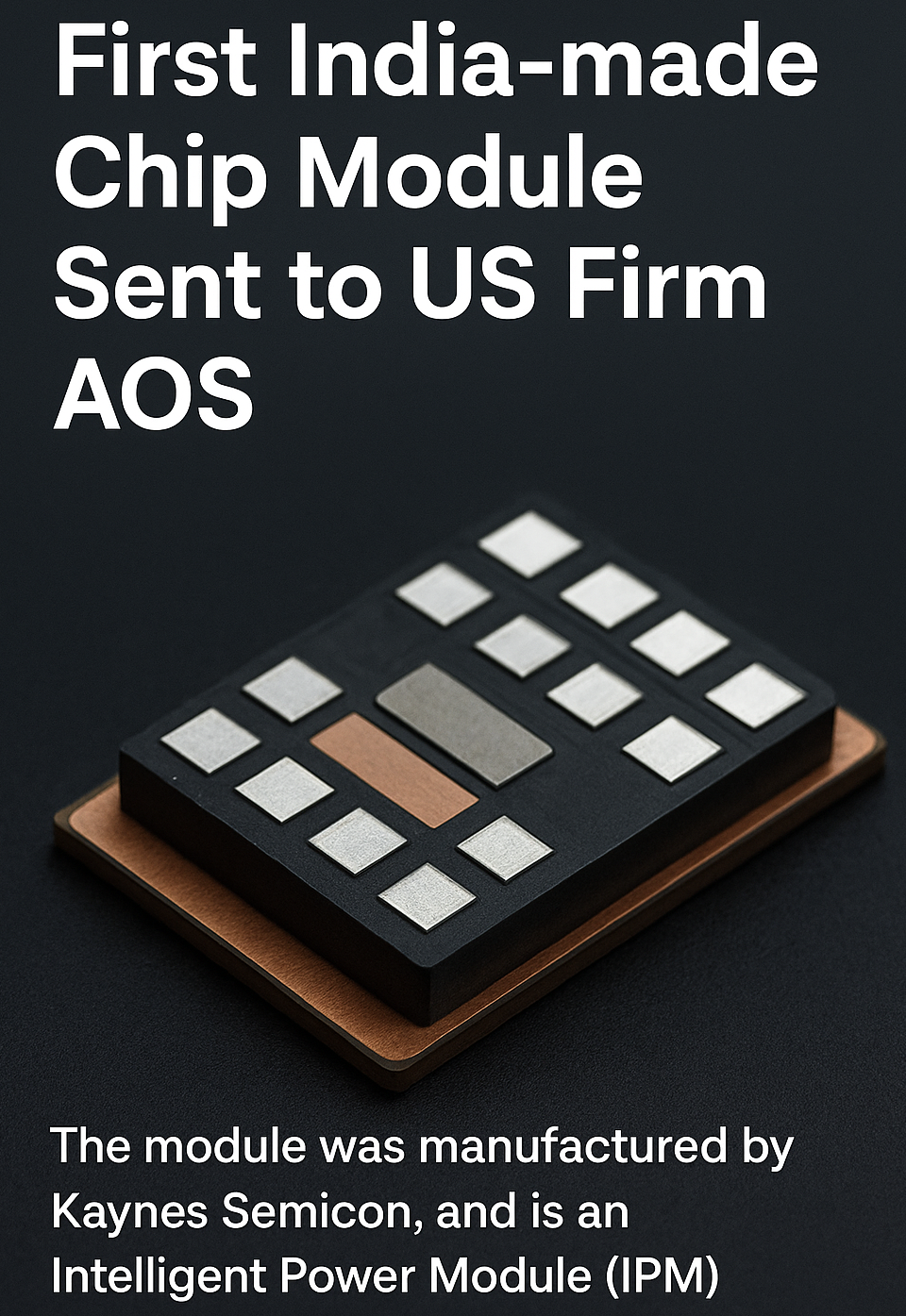In a historic milestone, India has dispatched its first commercially packaged chip module to an overseas client. This module, produced domestically, was sent to Alpha & Omega Semiconductor (AOS), a U.S. firm based in California. The development underscores the progress of the India Semiconductor Mission and signals India’s evolving capabilities in advanced chip packaging and export.

Manufactured by Kaynes at Sanand OSAT Facility
Contents
- 1 Manufactured by Kaynes at Sanand OSAT Facility
- 2 What the Module Is: Intelligent Power Module (IPM)
- 3 Technical Complexity & Innovation
- 4 Production Capacity & Next Steps
- 5 Implications for India’s Export & Global Integration
- 6 Boost to the India Semiconductor Mission
- 7 Challenges and What Lies Ahead
- 8 Conclusion: A Proud Milestone for India
The module was manufactured by Kaynes Semicon at its OSAT (Outsourced Semiconductor Assembly and Test) facility in Sanand, Gujarat. The facility was established as part of India’s push to build domestic assembly-and-test infrastructure under the India Semiconductor Mission 1.0.
What the Module Is: Intelligent Power Module (IPM)
This isn’t just any chip—it’s an Intelligent Power Module (IPM). About 900 IPMs were shipped overseas in this first consignment. Each module integrates multiple dies, including IGBTs, controller ICs, diodes and more, putting together power electronics, protection, and control circuits into a single package. This multi-chip module (MCM) packaging is a more advanced and compact method compared to single-die designs.
Technical Complexity & Innovation
The module represents advanced engineering: it hosts 17 dies in one package, combining six IGBTs, two controller ICs, six fast recovery diodes (FRDs), and three diodes. Such complexity demands precise assembly, testing, marking, and packaging processes—showcasing the technological depth India is developing in chip manufacturing.
Production Capacity & Next Steps
Kaynes’ Sanand facility currently has the capacity to produce up to 3,000 modules per day. The company plans to scale operations further and deliver subsequent shipments soon. Meanwhile, the pilot line began operations in April, and full mass production is targeted in early 2026.
Implications for India’s Export & Global Integration
By exporting the first India-made chip module, India is now a participant in the global semiconductor supply chain, not just a consumer. Such exports help reduce trade deficits, build credibility in technology manufacturing, and attract further foreign investment in electronics and chip-making. It also signals to global buyers that India can be a source of sophisticated, high-quality electronic components.
Boost to the India Semiconductor Mission
This export validates many of the goals of the India Semiconductor Mission—to build end-to-end semiconductor capability in India, including design, fabrication, packaging, testing, and export. It also complements other efforts like the PLI (Production Linked Incentive) schemes and infrastructure support to attract global semiconductor players to India.
Challenges and What Lies Ahead
While this step is momentous, challenges remain. Ensuring consistency in yield and quality, scaling up manufacturing volumes, achieving cost competitiveness, and building a robust upstream supply chain (like raw materials, specialized gases, testing equipment) are crucial to sustaining momentum. The coming quarters will be a litmus test for India’s chip ambitions.
Conclusion: A Proud Milestone for India
The shipment of India’s first multi-chip / intelligent power module to AOS stands as a proud moment in the country’s semiconductor history. It is a tangible proof that India can manufacture advanced electronic modules for global clients. As India continues to build its semiconductor ecosystem, exports like this will help solidify its place in the high-tech world.

